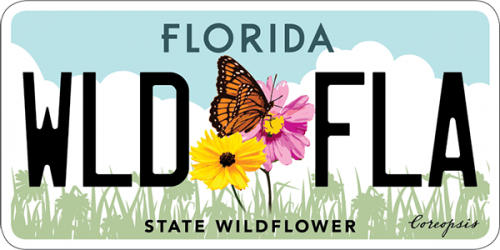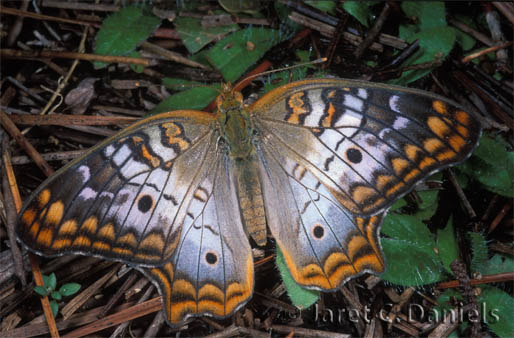- Family name: Nymphalidae/Brush-Footed Butterflies
- General description: white with brown markings and orange margins; forewing with small black central spot; hindwing with two small black spots and short tail. Ventral hindwing as above but paler and with some pinkish markings.
- Field Marks: white with brown markings and orange margins; forewing with single black central spot; hindwing with two small black spots and short tail
- Sexes: appear similar
- Wingspan: 35-60 mm
- Life Cycle: Egg: green, laid singly on host leaves Mature larva: black with small white spots and black spines Chrysalis: green
- Number of Generations: multiple
- Flight Season: All
- Abundance: Common
- Habitat: wet ditches, canal banks, disturbed sites, pond edges, roadsides
- Larval Host Plants: water hyssop (Bacopa monnieri), frogfruit (Phyla nodiflora)
- Similar Species:
- Additional Information: Often expands range into northern portions of peninsular Florida; adults fly low to the ground
- Range in Florida
 The Florida Wildflowers & Butterflies projects at the Florida Museum are sponsored in part by the State of Florida and the Florida Wildflower Foundation, Inc.
The Florida Wildflowers & Butterflies projects at the Florida Museum are sponsored in part by the State of Florida and the Florida Wildflower Foundation, Inc.
